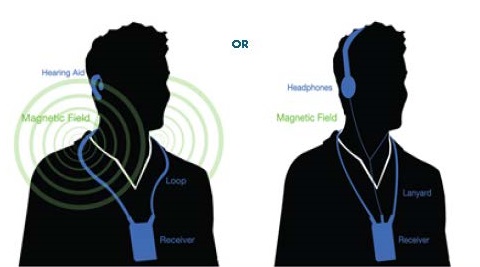Infrared systems

Infrared technologies can be used to transmit an assistive listening audio signal in a room or theatre auditorium.
With an infrared system a person requires a special receiver, which is usually available at a customer service desk or by asking a member of staff.
If you are going to the theatre, you may need to book your receiver in advance.
Infrared receivers can either be used with headphones or a neck-loop to connect to a hearing aid / cochlear implant. Sometimes stethoscope style receivers are used, which have earphones built into the receiver. In this case the earphone tips should be cleaned or replaced between use.
To use a receiver with hearing aid / cochlear implant simply place the lanyard over your head so that the receiver lies on your chest — in this way it will not become obstructed or lose signal. It’s also a good practice to sit away from internal pillars or windows as this can also cause signal loss. The venue should be able to advise where to sit to receive the best signal if necessary. If you have been allocated seats where you are not able to receive audio from the infrared system, ask to be moved to an area where the receiver can pick up the signal from the transmitter.
Some newer infrared systems are sensitive enough to be worn under light clothing if more discretion is preferred.
The neck loop of the receiver creates a magnetic field around your head, to which you can connect by switching on the “T” or “loop” programme of your hearing aid / cochlear implant; the same as you would with a normal hearing loop system. You may need to experiment with the positioning of the neckloop to get the best out of it, particularly the position on your shoulders.
If you want to use a receiver at a venue and you don’t use a hearing aid/cochlear implant then you may wish to consider bringing your own headphones to plug into it. It is advisable not to use headphones with hearing aids as you may experience feedback noise.
While there is no evidence to suggest that neckloops would affect pacemakers, if you do wear a pacemaker you should seek medical advice before a neckloop, and it is recommended to keep a separation of 150mm (6”) between neckloop cables and the pacemaker.
With thanks to Ampetronic for reviewing the content on this page.
Webpage updated: May 2023